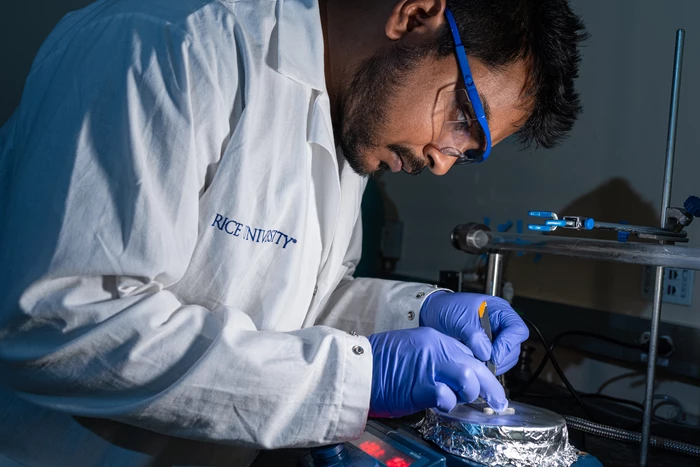Scientists at Rice University have cooked up a new alloy with a unique and diverse set of attributes that could prove highly effective at protecting steel from corrosion. The novel coating not only prevented rusting in submerged slabs of common steel, but is flexible and proved capable of healing itself when damaged.
The new anti-corrosion coating is made of a lightweight sulfur-selenium alloy, and according to the material scientists behind it, combines desirable qualities from currently available solutions. This means an ability to block moisture and chlorine like zinc- and chromium-based coatings, an ability to protect steel under seawater-like conditions like polymer-based coatings, and an ability to fend off microbe-induced corrosion.
This was established through a series of experiments, the first of which saw small slabs of common mild steel coated with sulfur-selenium alloy and submerged in seawater for a month, along with an uncoated slab of steel as a control. While the bare steel rusted significantly, the coated steel exhibited no change in color and proved highly resistant to oxidation.
Next, the scientists tested it out against sulfate-reducing bacteria that is known to greatly accelerate the corrosive process. Coated and uncoated samples were exposed to plankton and biofilms, and again the alloy helped to protect the steel underneath. According to the scientists, the coating offered an "inhibition efficiency" of 99.99 percent.
Perhaps most impressively, the team found the alloy to have powerful self-healing properties. When a film of it was cut in half and the two pieces were placed next to each other on a hot plate, they reformed into a single, foldable film within two minutes when heated to 70 °C (158 °F). Pinholes could also be repaired by heating the material to 130 °C (266 °F) for 15 minutes, with the healed material proving just as effective at protecting steel as undamaged, original coatings.
“If you give the alloy a poke, it recovers,” says study author Muhammad Rahman. “If it needs to recover quickly, we assist it using heat. But over time, most thick samples will recover on their own.”

Flexible in nature, the scientists see the new alloy not just serving as a protective coating for steel infrastructure in and around watery environments, but in bendable electronics too. On this, they report that alloy to be a better insulator than most flexible materials, while also being more flexible than most insulating materials. They are now continuing to experiment with varieties of the material to suit different types of steel and explore different coating techniques.
“The first target is structures, but we’re aware the electronics industry faces some of the same problems with corrosion,” says study author Pulickel Ajayan. “There are opportunities.”
The research was published in the journal Advanced Materials.
Source: Rice University




